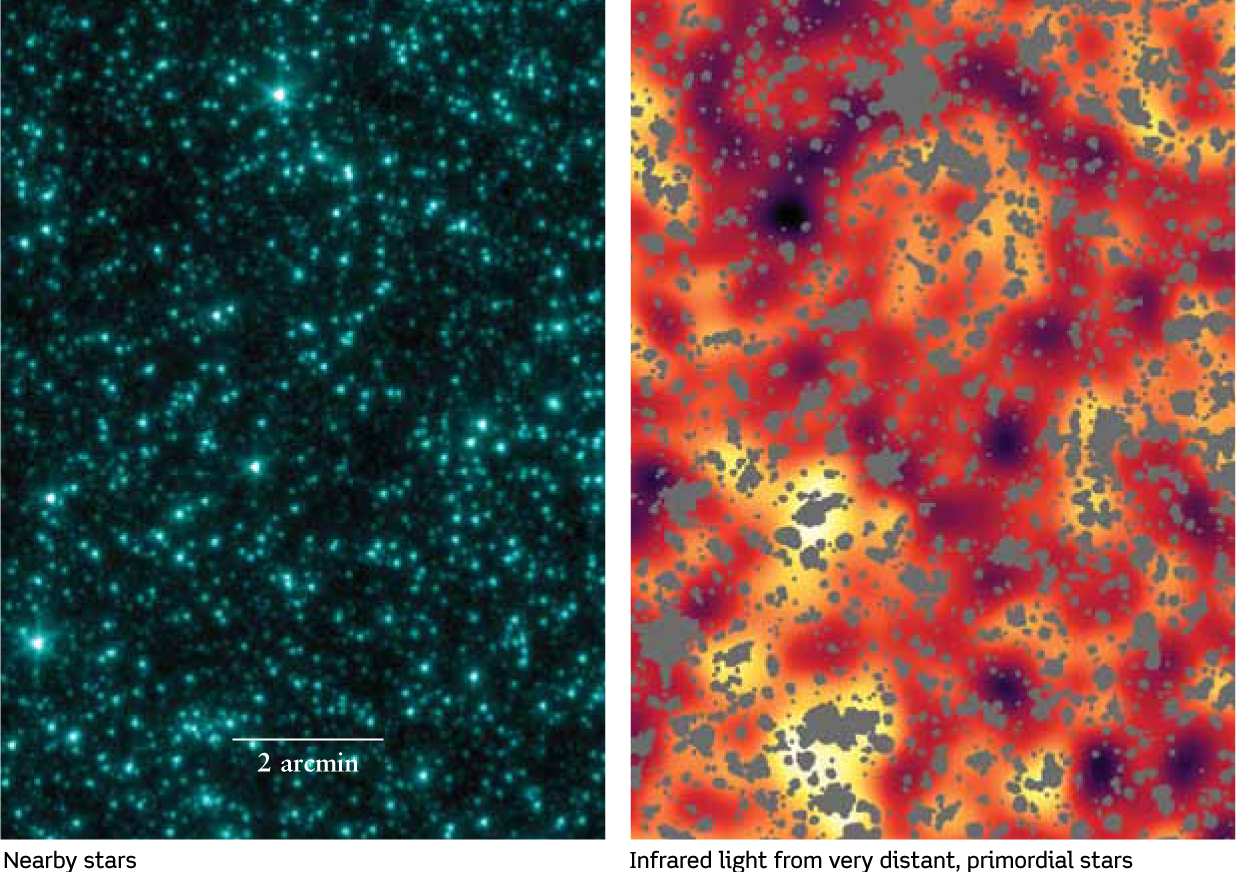CHAPTER
26

These Spitzer Space Telescope images show (left) light from nearby stars and (right) light from a remote population of ancient stars in the same patch of sky with the nearby stars in our Galaxy removed.
Exploring the Early Universe
LEARNING GOALS
By reading the sections of this chapter, you will learn
| 26–1 | How the very young universe expanded enormously in a brief instant of time |
| 26–2 | How the fundamental forces of nature and the properties of empty space changed during the first second after the Big Bang |
| 26–3 | How the physics of subatomic particles affected the evolution of the early universe |
| 26–4 | As the early universe expanded and cooled, most of the matter and antimatter annihilated each other |
| 26–5 | Which chemical elements in today’s universe are remnants of the primordial fireball |
| 26–6 | How the first stars and galaxies formed in the early universe |
| 26–7 | What steps scientists are taking in the quest toward an all-encompassing “theory of everything” |
The two images here show a patch of sky near the Big Dipper in the constellation Ursa Major. The left-hand image is dominated by relatively nearby stars in our Galaxy. But when these stars are removed digitally, what remains in the right-hand, false-color image is an intriguing pattern of highly redshifted light from objects much farther away. This radiation is thought to be some of the oldest starlight in the universe: It was emitted by members of the very first generation of stars, born when our universe was less than a billion years old.
Only recently have new telescopes begun to reveal the story of the first stars and first galaxies. But no telescope can ever hope to directly observe events during the first 380,000 years after the Big Bang, when the universe was so opaque that it blocked the free passage of light. We can nonetheless reconstruct some of the events of that hidden epoch, because many aspects of today’s universe are relics of the earliest events in the cosmos.
In this chapter we will see evidence that during the first minuscule fraction of a second after the Big Bang, the universe inflated in size by a stupendously large factor of about 1050. During the next 15 minutes, after inflation came to an end, the universe was so dense and hot that particles were constantly colliding at high speeds. As we will see, the events of those 15 violent minutes set the stage for all that came afterward—from the formation of atoms 380,000 years later, to the appearance of the first stars and galaxies some 400 million years after the Big Bang, down to the diverse present-day universe of which we are part.